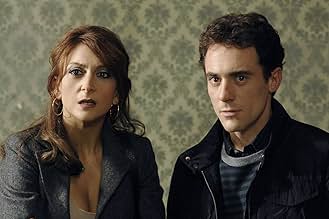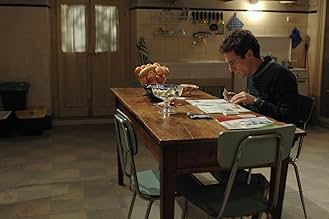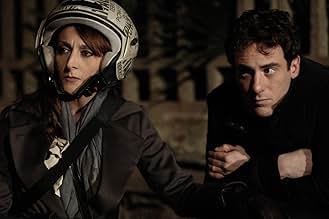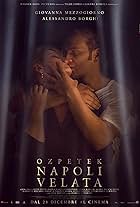Once again Ozpetek takes us to a magical place, and entrances us with a sensitive and inspiring film. His two most famous films are probably FACING WINDOWS (2003, see my review) and SACRED HEART (2005, see my review), which are both classics and masterpieces of world cinema. His film LOOSE CANNONS (2010, see my review) is marvellous without quite being a classic. This one is somewhat better. It is difficult to describe, because it combines genres in a bold and astonishing way. Ozpetek took many risks with this film, which in the hands of a lesser director could have collapsed into a heap. But, as usual, Ozpetek makes the impossible work. The lead actor in the film is Elio Germano, who plays the character Pietro. He is utterly charming and delightful, and he holds the film together wonderfully. Germano has appeared in 49 films despite being only 34 years old, so he is a consummate professional. The entire cast is excellent, and there is a magnificent and tragic performance by Anna Proclemer as the elusive and mysterious Livia Morosini, whom Germano has to seek out under a false name in order to discover the truth of what happened in 1943. She was 88 at the time she played this, her very last role, and she died a few months later, in 2013. She was a magnificent actress but she only made 21 films in 60 years. However, those roles that she did play included George Sand, Annie Sullivan (the woman who taught Helen Keller, as portrayed in THE MIRACLE WORKER by Anne Bancroft in 1962), O'Neill's Anna Christie (originally portrayed by Garbo on screen), and Nastasja Filippova in an Italian TV series adaptation of Dostoevsky's THE IDIOT (1959, not to be confused with the modern Russian series based on that novel). The story of this film mixes fantasy with reality, always a dicey business, but Ozpetek gets away with it. Germano is thrilled when he finds a house to rent in the Monteverde district of Rome at an affordable price. But what he does not realize is that the property is haunted by a group of people who all died there in 1943 but who are trapped in the house and unable to move on. Germano is a lonely fellow, and he comes to accept the presence of the ghosts and interacts with them; they all speak to one another normally, but others cannot see them. This may sound absurd, but Ozpetek's sense of humour and whimsy results in our accepting the absurdity and watching the film sympathetically as the events unwind. Germano takes on the task of finding out what happened to the ghosts, how and why they died, and who betrayed them, because until they can realize this themselves they are stranded. So yet another layer of the film then takes shape, namely the solving of a historical mystery. This film interweaves humour, pathos, tragedy, comedy, fantasy and reality. That is a lot of threads to draw together, but it succeeds. The underlying unifier to all of this is Ozpetek's warm and gentle sense of humanity.
































